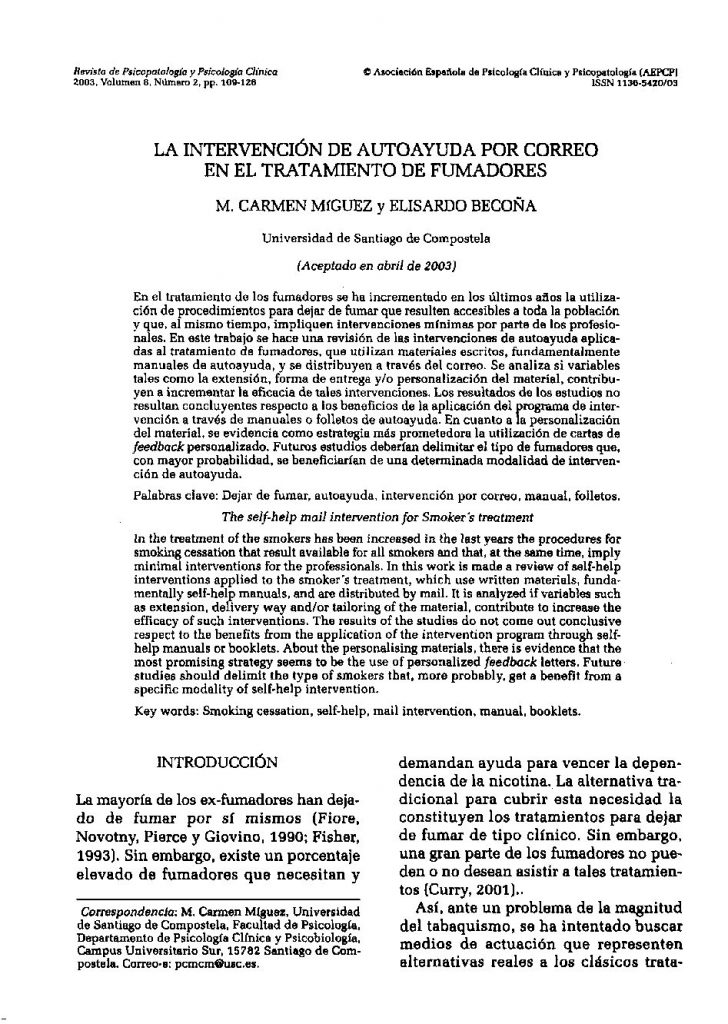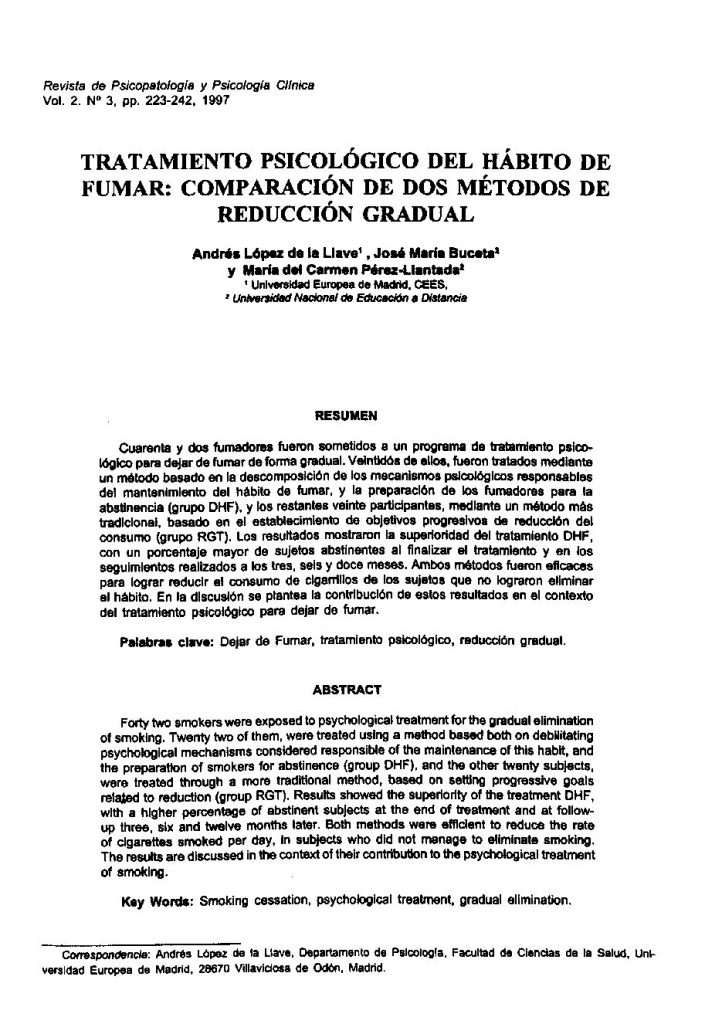La intervención de autoayuda por correo en el tratamiento de fumadores.

- La intervención de autoayuda por correo en el tratamiento de fumadores.
- ¿Existe un patrón diferencial de conducta de enfermedad y adhesión al tratamiento de la infección por VIH/SIDA en pacientes con historia de abuso de drogas?.
- Detección de problemas relacionados con el alcohol en la familia a través de los hijos.
- La Técnica de Rejilla como instrumento de evaluación y formulación de hipótesis clínicas.
- Escala PANAS de afecto positivo y negativo para niños y adolescentes (PANASN).
- Informe sobre las actividades llevadas a cabo en la Comisión Nacional de la Especialidad en Psicología Clínica (CNEPC).
- Los fenómenos disociativos: Una revisión conceptual.
In the treatment of the smokers has been increased in the last years the procedures for smoking cessation that result available for all smokers and that, at the same time, imply minimal interventions for the professionals. In this work is made a review of self-help interventions applied to the smoker´s treatment, which use written materials, fundamentally self-help manuals, and are distributed by mail. It is analyzed if variables such as extension, delivery way and/or tailoring of the material, contribute to increase the efficacy of such interventions. The results of the studies do not come out conclusive respect to the benefits from the application of the intervention program through self-help manuals or booklets. About the personalising materials, there is evidence that the most promising strategy seems to be the use of personalized feedback letters. Future studies should delimit the type of smokers that, more probably, get a benefit from a specific modality of self-help intervention.
En el tratamiento de los fumadores se ha incrementado en los últimos años la utilización de procedimientos para dejar de fumar que resulten accesibles a toda la población y que, al mismo tiempo, impliquen intervenciones mínimas por parte de los profesionales. En este trabajo se hace una revisión de las intervenciones de autoayuda aplicadas al tratamiento de fumadores, que utilizan materiales escritos, fundamentalmente manuales de autoayuda, y se distribuyen a través del correo. Se analiza si variables tales como la extensión, forma de entrega y/o personalización del material, contribuyen a incrementar la eficacia de tales intervenciones. Los resultados de los estudios no resultan concluyentes respecto a los beneficios de la aplicación del programa de intervención a través de manuales o folletos de autoayuda. En cuanto a la personalización del material, se evidencia como estrategia más prometedora la utilización de cartas de feedback personalizado. Futuros estudios deberían delimitar el tipo de fumadores que, con mayor probabilidad, se beneficiarían de una determinada modalidad de intervención de autoayuda.




